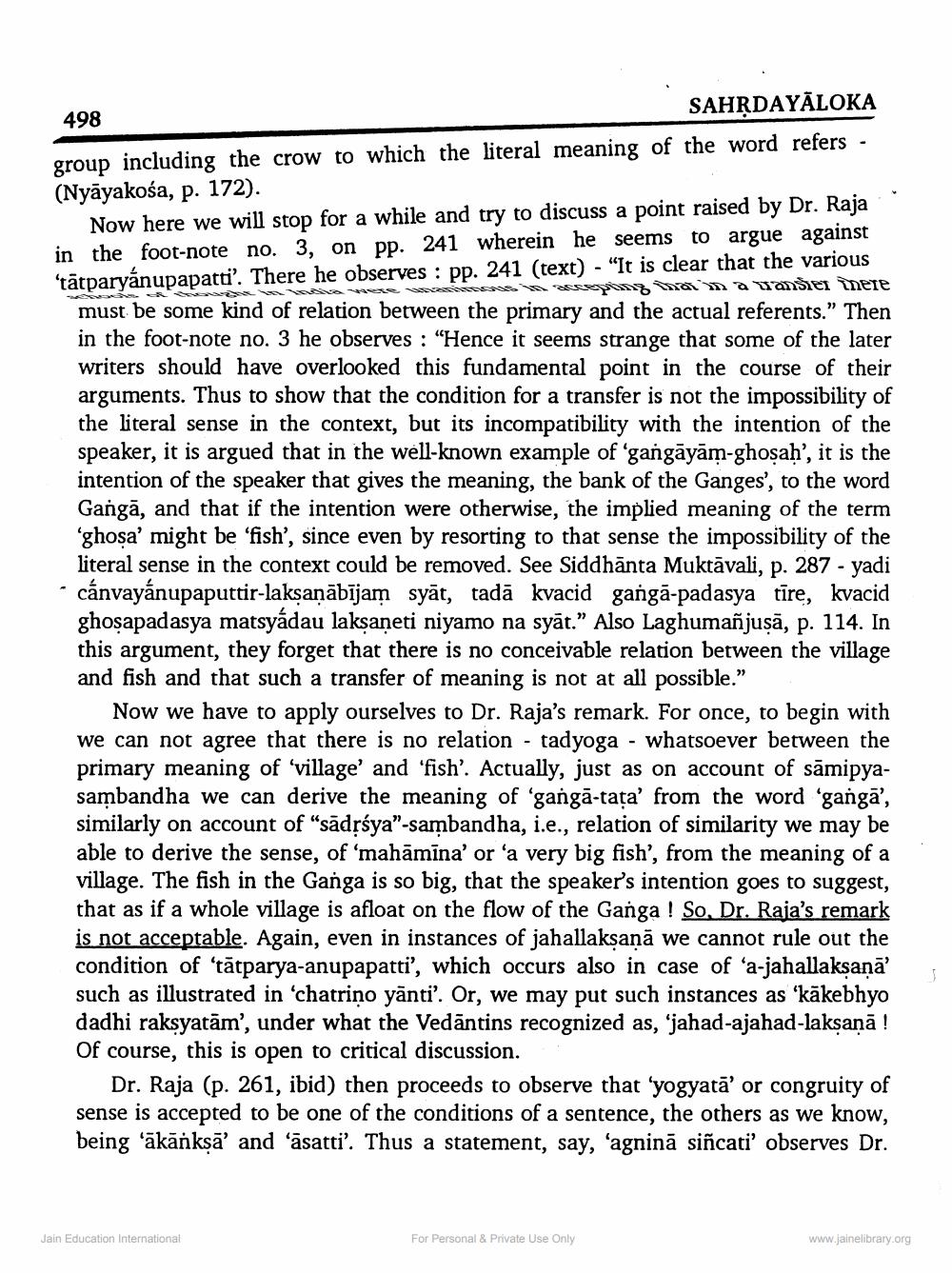________________
498
SAHRDAYĀLOKA group including the crow to which the literal meaning of the word refers - (Nyāyakośa, p. 172).
Now here we will stop for a while and try to discuss a point raised by Dr. Raja in the foot-note no. 3, on pp. 241 wherein he seems to argue against 'tātparyánupapatti'. There he observes : pp. 241 (text) - "It is clear that the various
Sision mana wanger mere must be some kind of relation between the primary and the actual referents." Then in the foot-note no. 3 he observes : “Hence it seems strange that some of the later writers should have overlooked this fundamental point in the course of their arguments. Thus to show that the condition for a transfer is not the impossibility of the literal sense in the context, but its incompatibility with the intention of the speaker, it is argued that in the well-known example of 'gangāyām-ghosah', it is the intention of the speaker that gives the meaning, the bank of the Ganges', to the word Gangā, and that if the intention were otherwise, the implied meaning of the term 'ghosa' might be 'fish', since even by resorting to that sense the impossibility of the literal sense in the context could be removed. See Siddhānta Muktāvali, p. 287 - yadi cánvayánupaputtir-laksaņābījam syāt, tadā kvacid gangā-padasya tīre, kvacid ghosapadasya matsykdau laksaneti niyamo na syāt.” Also Laghumañjusā, p. 114. In this argument, they forget that there is no conceivable relation between the village and fish and that such a transfer of meaning is not at all possible.”
Now we have to apply ourselves to Dr. Raja's remark. For once, to begin with we can not agree that there is no relation - tadyoga - whatsoever between the primary meaning of 'village' and 'fish'. Actually, just as on account of sāmipyasambandha we can derive the meaning of 'gangā-tata' from the word 'gangā', similarly on account of “sādęśya”-sambandha, i.e., relation of similarity we may be able to derive the sense, of 'mahāmīna' or 'a very big fish', from the meaning of a village. The fish in the Ganga is so big, that the speaker's intention goes to suggest, that as if a whole village is afloat on the flow of the Ganga ! So, Dr. Raja's remark is not acceptable. Again, even in instances of jahallaksanā we cannot rule out the condition of 'tātparya-anupapatti', which occurs also in case of 'a-jahallaksanā' such as illustrated in 'chatrino yānti'. Or, we may put such instances as 'kākebhyo dadhi raksyatām', under what the Vedāntins recognized as, 'jahad-ajahad-laksanā! Of course, this is open to critical discussion.
Dr. Raja (p. 261, ibid) then proceeds to observe that 'yogyatā' or congruity of sense is accepted to be one of the conditions of a sentence, the others as we know, being 'ākāńksā' and 'āsatti'. Thus a statement, say, 'agninā siñcati' observes Dr.
Jain Education International
For Personal & Private Use Only
www.jainelibrary.org




